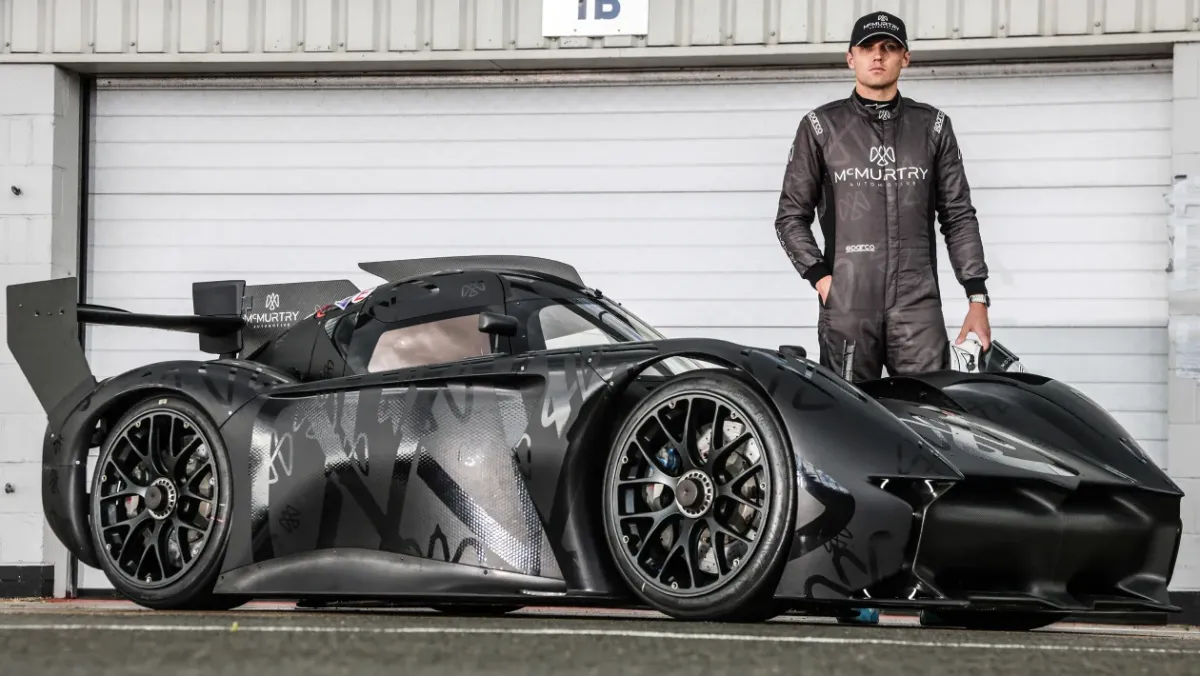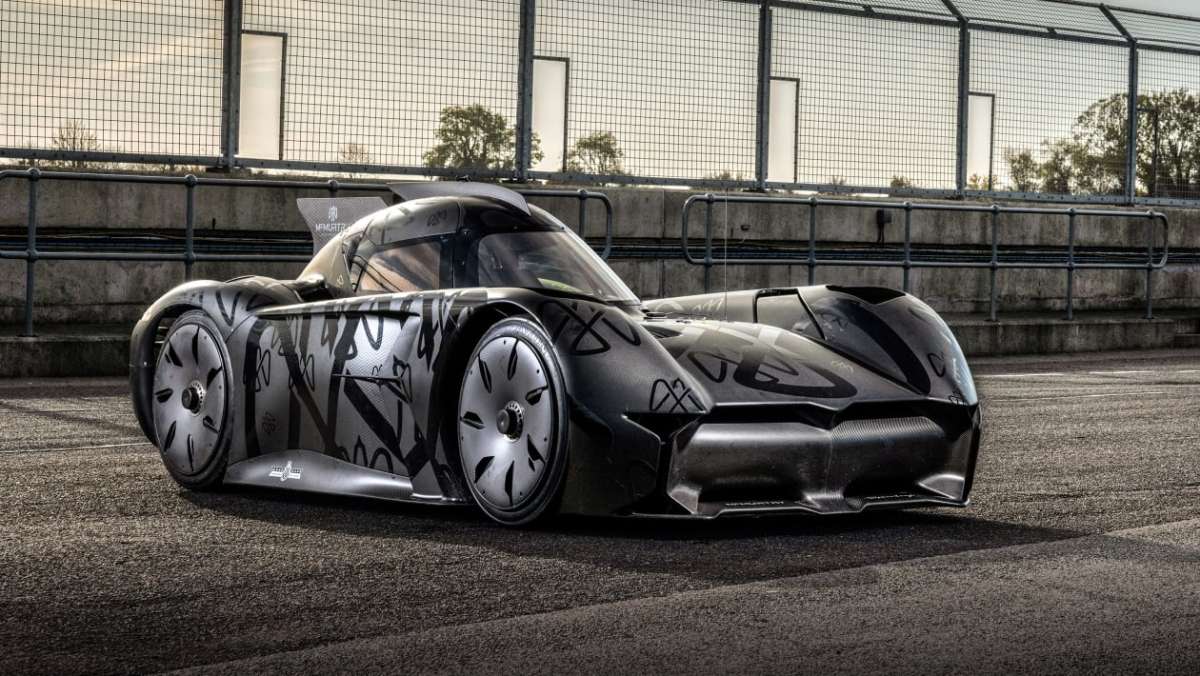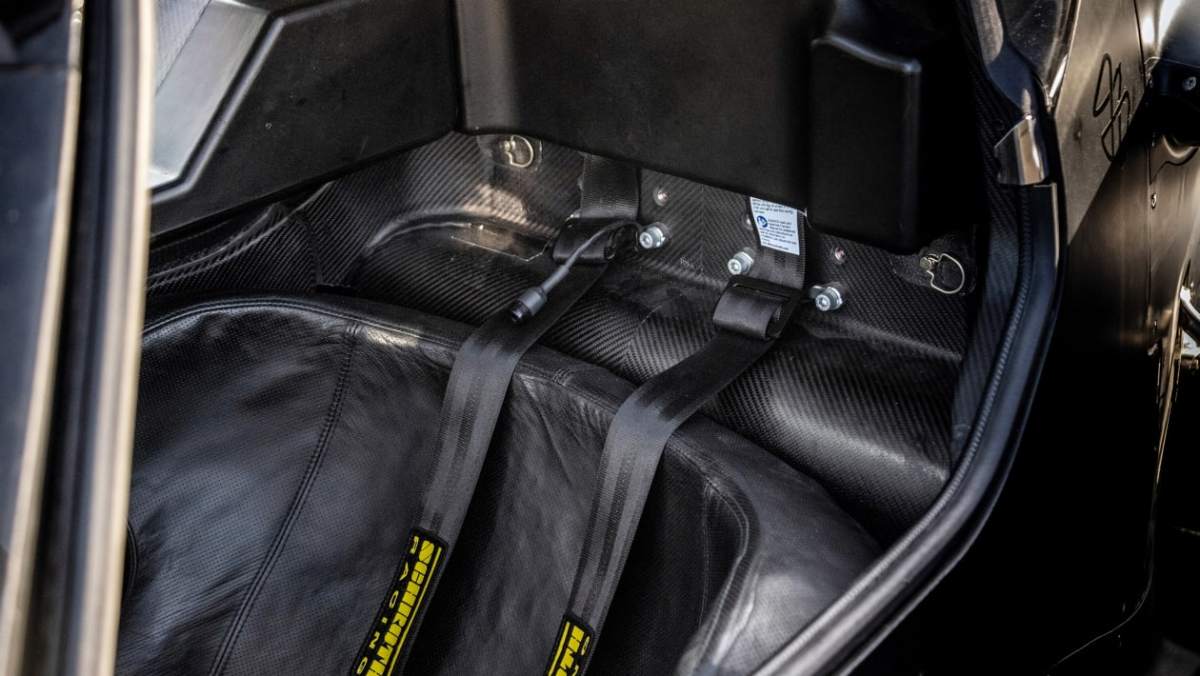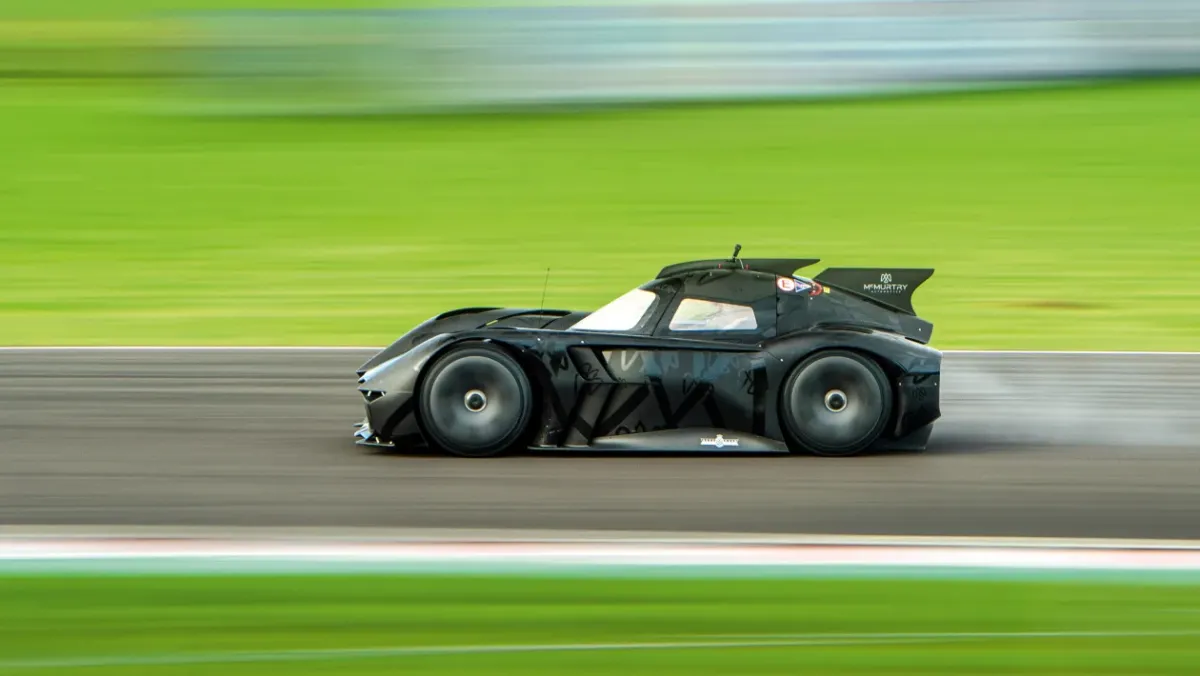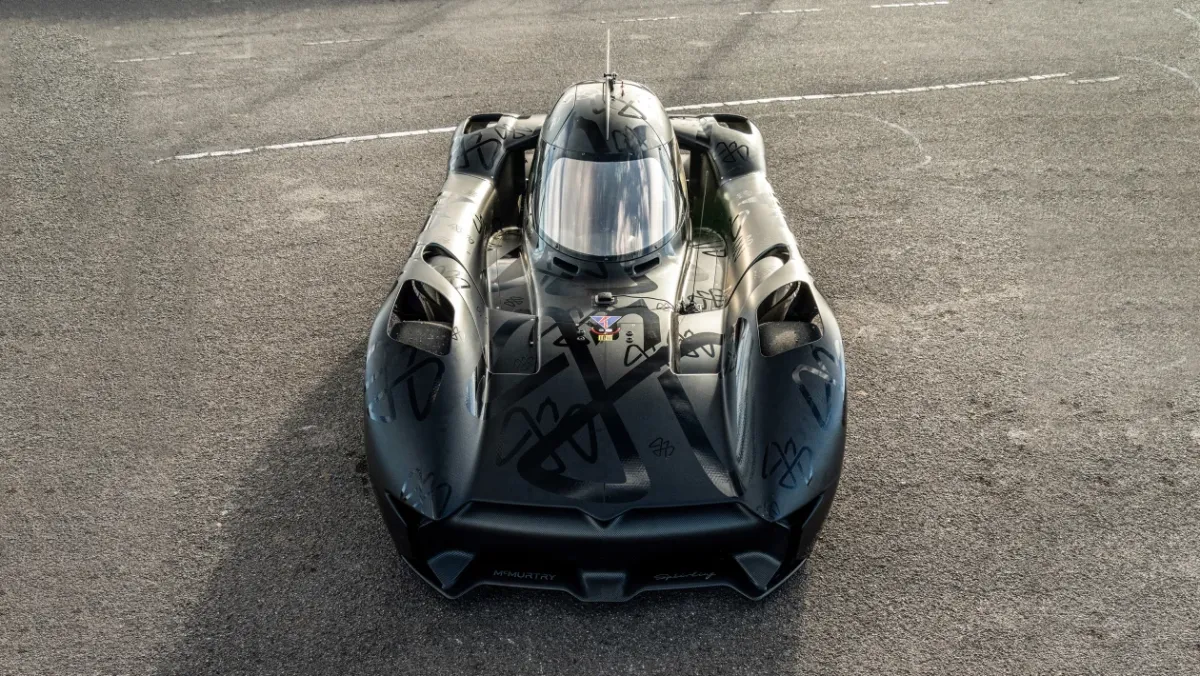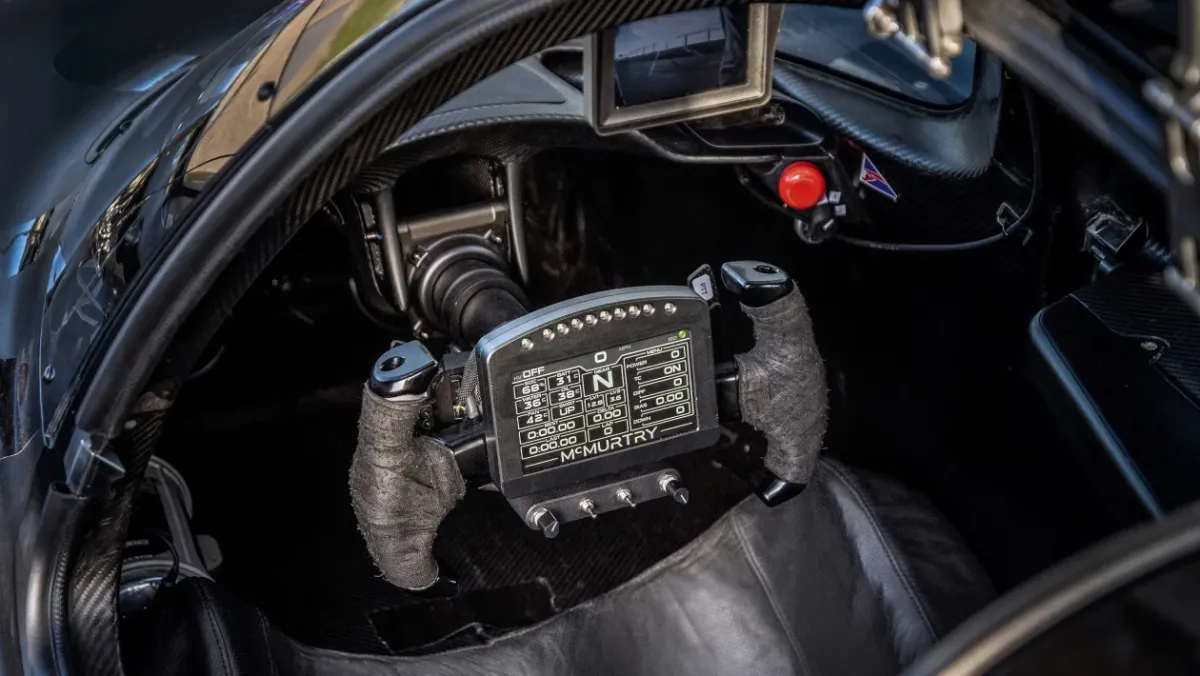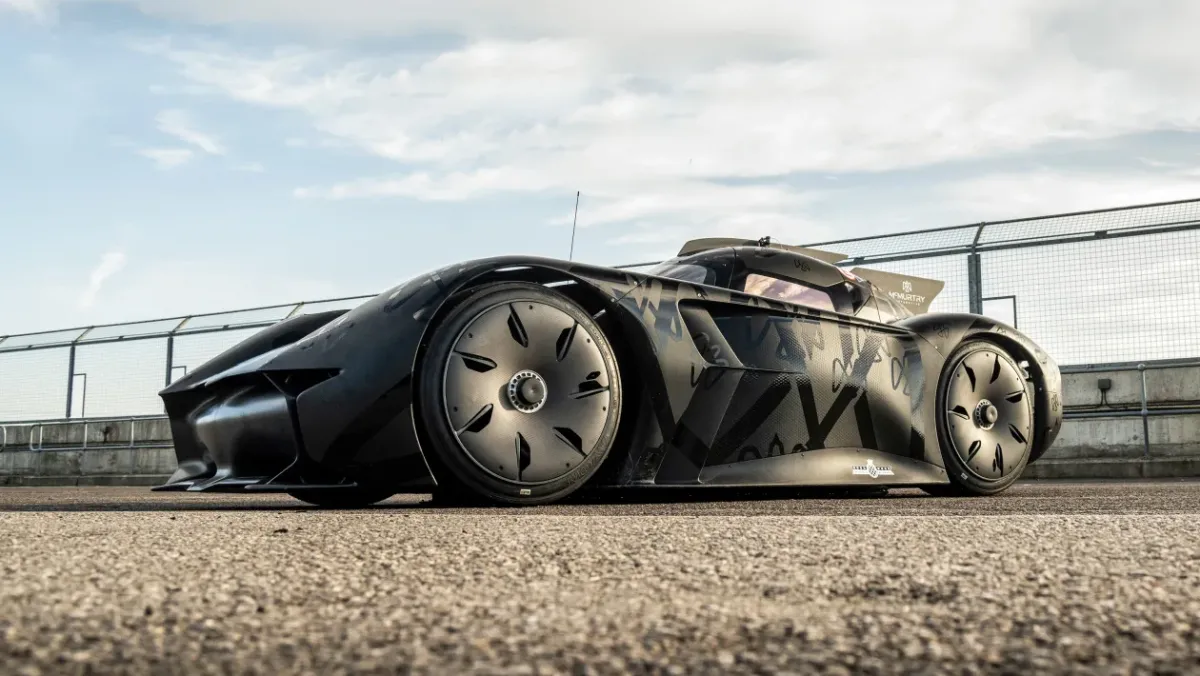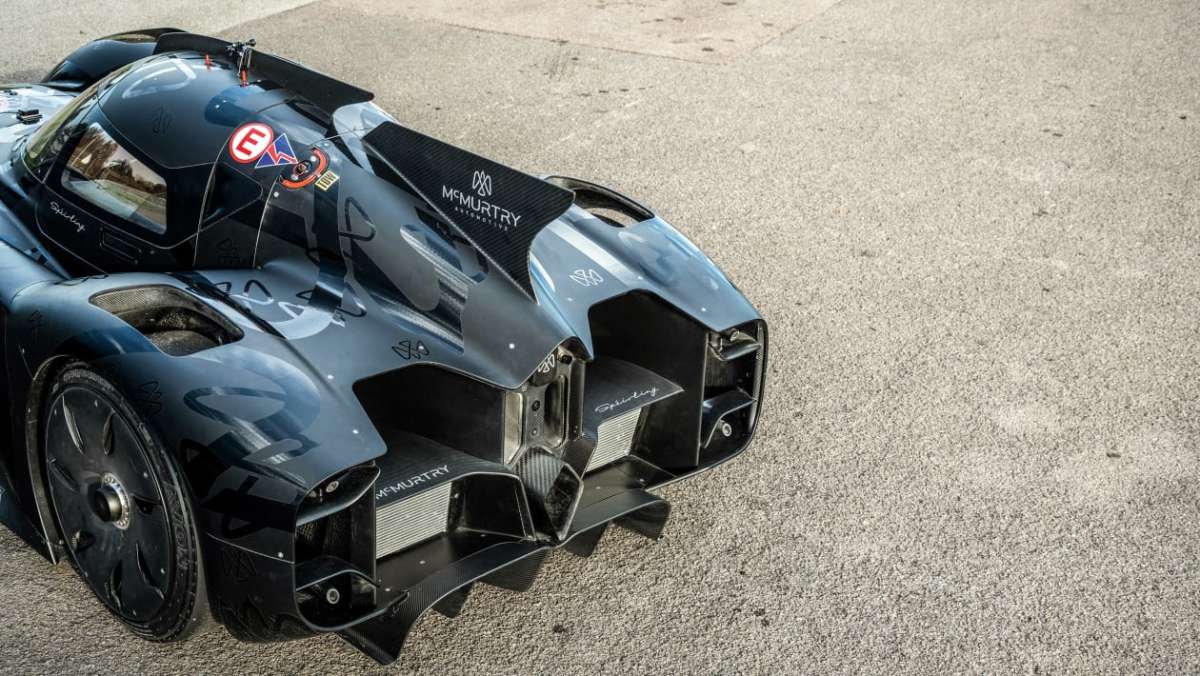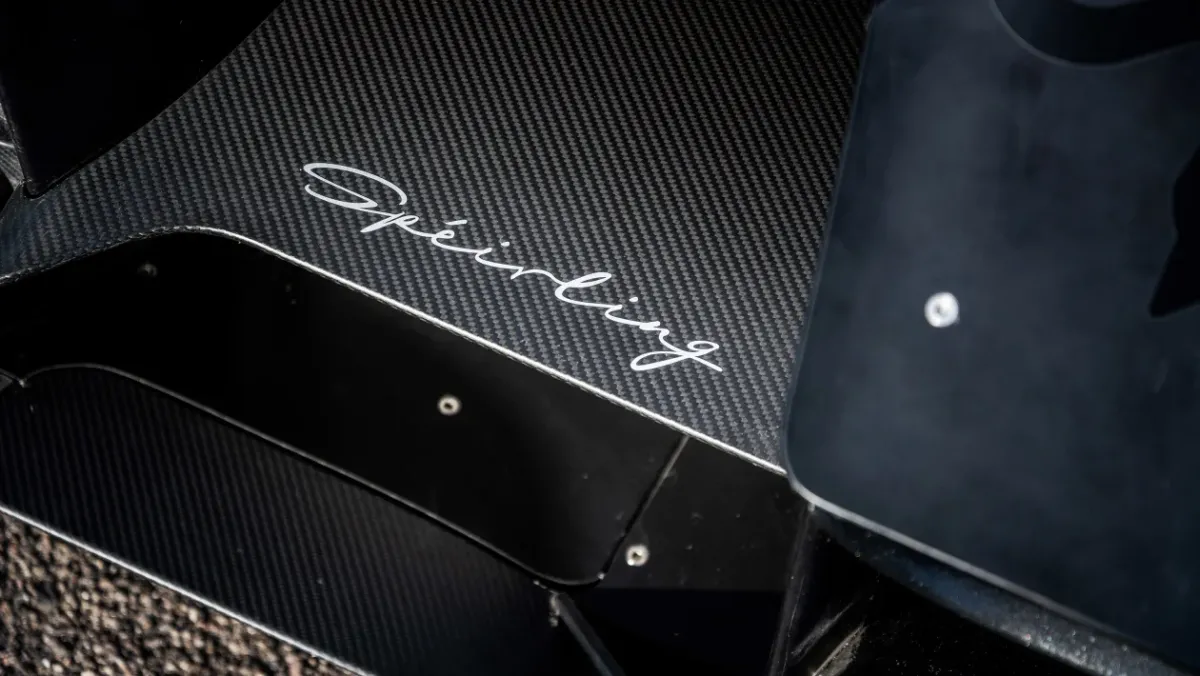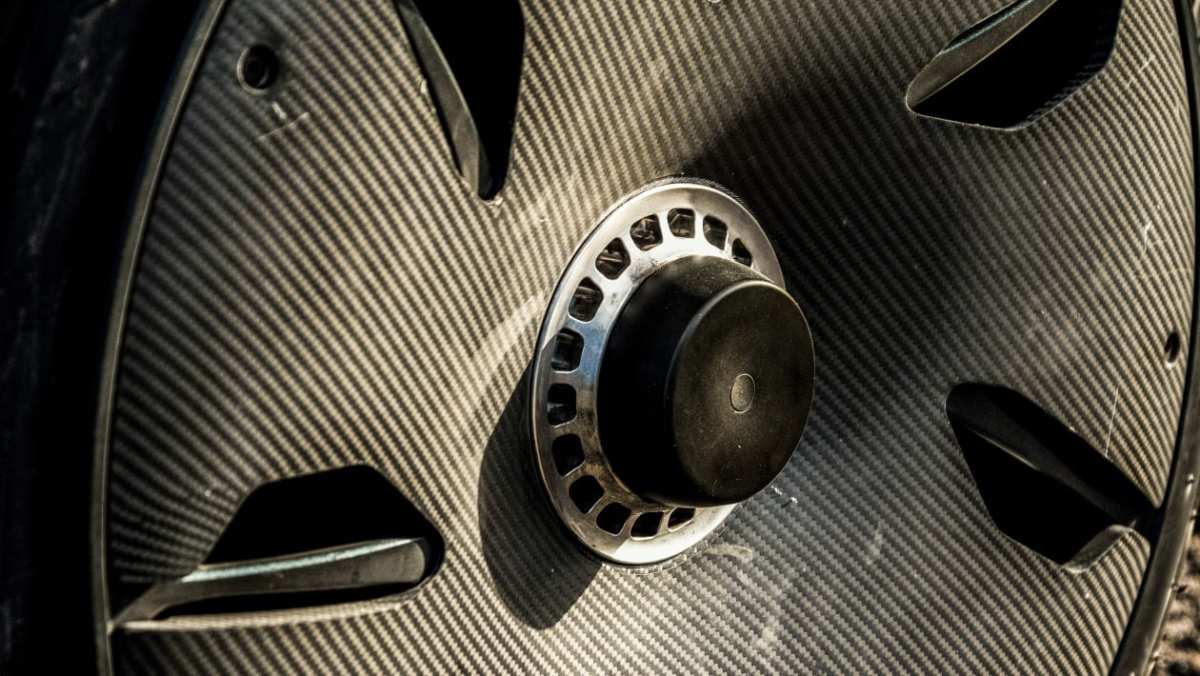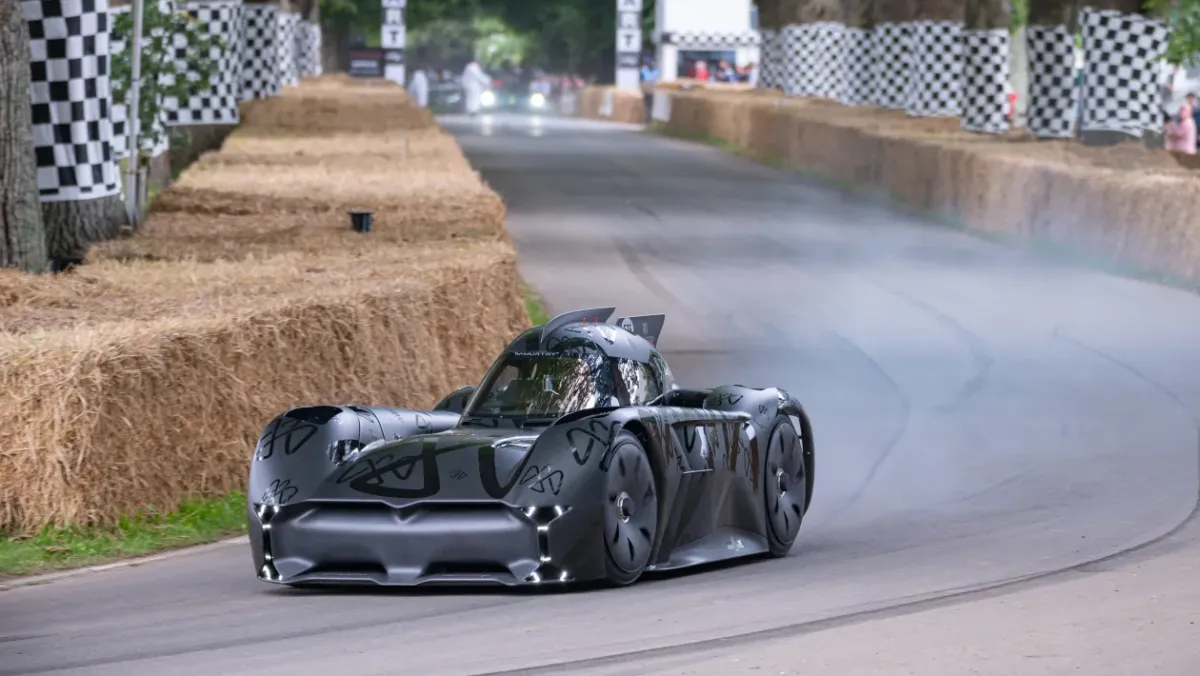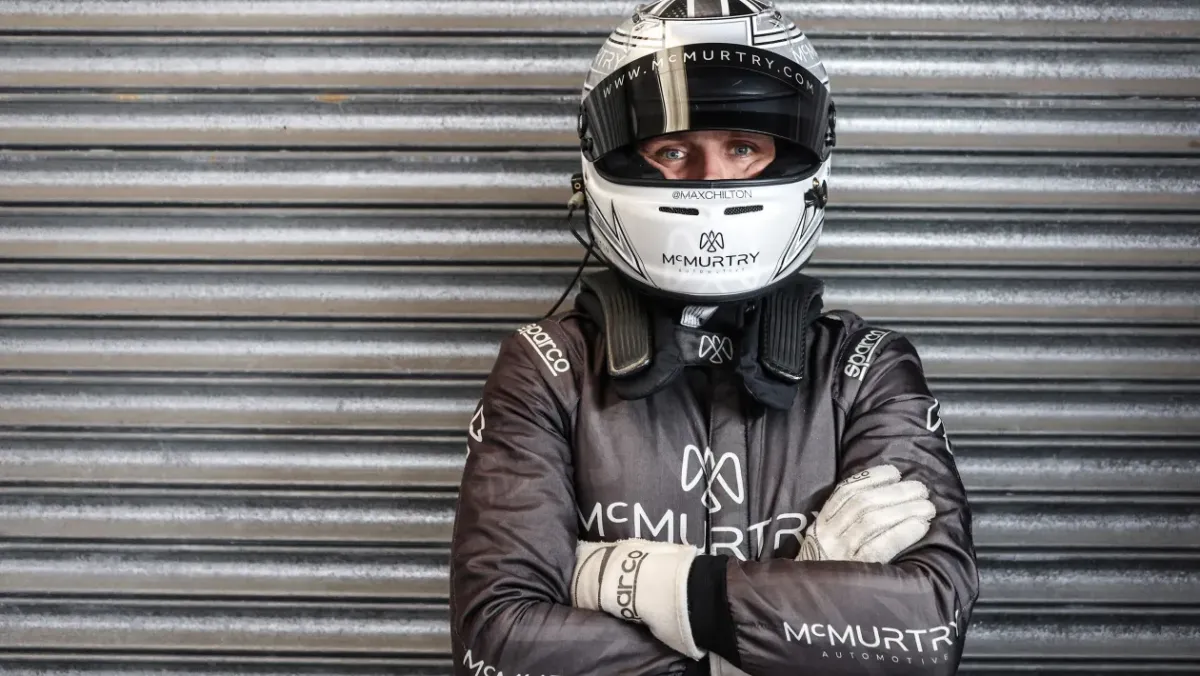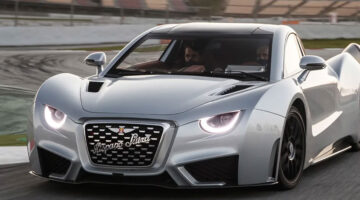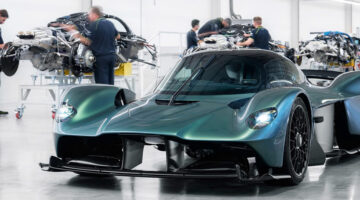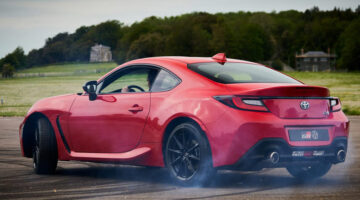The McMurtry Spéirling is aiming to dethrone the Volkswagen ID R as the fastest car to complete Goodwood hillclimb
The McMurtry Spéirling is making a return to the Goodwood Festival of Speed, but this year there’s a new agenda. After a year of extensive testing and development, the McMurtry is now eyeing the outright hillclimb record, an achievement that would knock the Volkswagen ID R from the top position.
Modified specifically for hillclimb conditions, the Spéirling utilises a pair of electric motors to send just shy of 1000bhp to the rear wheels. Despite the use of a 60kWh battery pack, its extremely compact carbonfibre monocoque construction helps keep weight below 1000kg, giving it a near-1:1 power-to-weight ratio.
What McMurtry believes is its real key to success, though, is its twin fan downforce system. Said to provide in excess of 2000kg of downforce from standstill, its efficacy at low speeds makes it favourable for relatively low-speed hillclimb applications such as the one at the centre of the Goodwood FoS. Though we’ll have to wait until Sunday to see just how capable it is, a 1.5sec 0-100kph time provides some indication as to its level of performance – top speed is limited to 241kph due to hillclimb-specific gearbox changes.
Ex-Formula 1 driver Max Chilton will be at the wheel for the attempt, supported by British hillclimb championship leader Alex Summers. Chilton said: ‘Having previously enjoyed demonstration runs in an F1 car at Goodwood Festival of Speed, this year, I’m looking forward to making my competitive hillclimb debut. The challenge now is to translate confidence and speed from testing on conventional circuits onto Goodwood’s tight, undulating hillclimb course. We will have limited practice runs and an audience of hundreds of thousands, so it’s a demanding yet great opportunity to show the current pace of this car on the world stage.
To see (and hear) the McMurtry Spéirling for yourself, keep an eye out during Batch 5 and the Sunday shootout sessions at the Goodwood Festival of Speed.
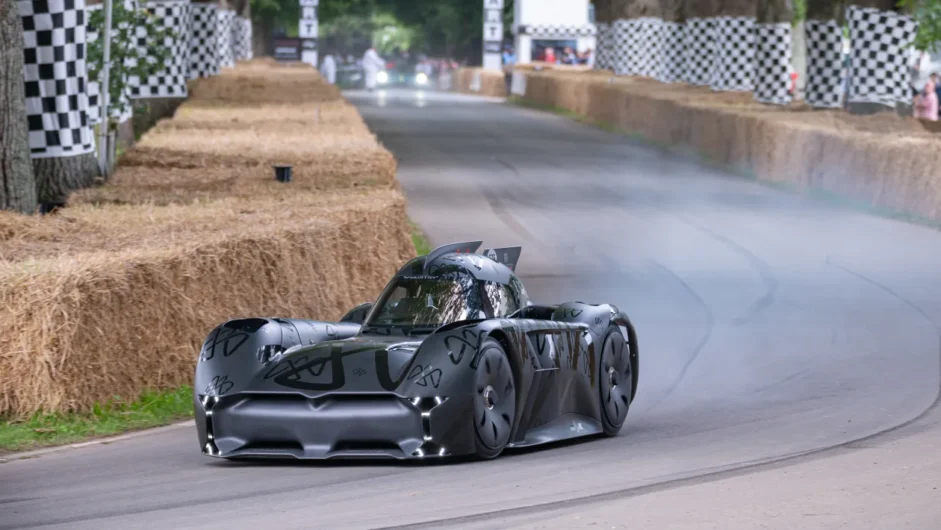
McMurtry Spéirling: a deep dive
When it finally pops over Avon Rise and tucks into Quarry Bend, it’s not what I was expecting. But I was expecting that. I’ve raced here at Castle Combe circuit, Wiltshire, in snorty stuff like Caterhams and TVRs and I knew the all-electric McMurtry Spéirling wasn’t going to sound anything like them, but when it appears it doesn’t sound much like any electric racer I’ve heard before either.
Its approach was heralded by a constant hum and it was that constancy that was the first discombobulating detail. I thought it was the electric motor and expected its pitch to drop as the little black car slowed and dived for the apex, but it didn’t. The reason it didn’t is because it was the sound of the suction fan of the Spéirling’s active downforce system.
The system also explains the second confusing aspect of the pass, which is what appears to be steam coming from the rear of the car as it corners and then accelerates away. It isn’t steam, it’s dust – and a surprising amount of it – being sucked from the surface of what looks like a clean race circuit.
These are the oddest details of a car that is itself unlike anything else I have ever seen. Of tiny dimensions (it casts a shadow smaller than a Volkswagen Up), with a central, single-seat cockpit trailing a fin, and riding on huge wheels whose carbon covers in motion give the appearance of balloon tyres, the McMurtry looks like… what? A fun-size Batmobile built to kei-car regulations? The diminutive, evil adversary in a new Pixar Cars movie? Or, as McMurtry would have it, the lightweight, fully electric track car that nobody else has had either the vision or the bravery to make.
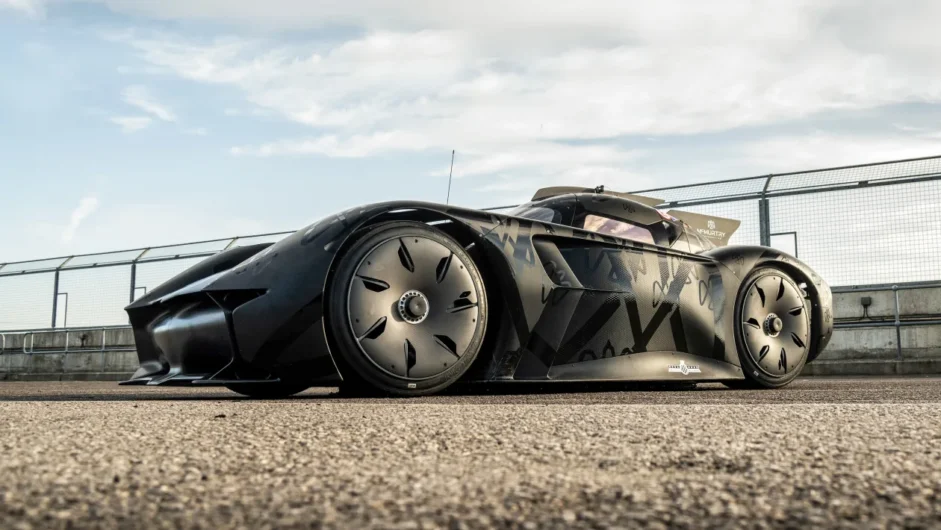
EVs like the Tesla Model S and Porsche Taycan have immense standing-start acceleration, but almost as a by-product. They have lots of battery power to give them the desired range, and the nature of electric motors is that they produce maximum torque at zero revs, and that combination delivers stunning off-the-line performance despite a huge kerb weight.
Draw up a list of attributes of a driver’s car, however, and standing-start acceleration will be ranked a long way down, along with maximum speed, because it’s not as relevant to the thrill of driving as response, dynamic agility and feel and feedback. This is the stuff that really matters, most of the time. Yet it seems like every new electric supercar that’s announced is built on the established EV model and promises 2000bhp and 0-100kph in two seconds but weighs getting on for 2000kg.
McMurtry gets it; it is creating an electric car with the same power-to-weight ratio of 1bhp per kg, but the numbers that take it there are halved: close to 1000bhp and a weight of less than 1000kg. Imagine how much more biddable and engaging and dynamic that would be. Make it very compact and imagine how much more exploitable it would be too. That’s the McMurtry Spéirling. ‘Spéirling’ is Irish and means thunderstorm, but who or what is McMurtry?
‘Sir David McMurtry is an amazing chap,’ says Thomas Yates, the young MD chosen by McMurtry to head up this new British company, based half an hour from Castle Combe in modest premises in Wotton-under-Edge, Gloucestershire. ‘Sir David is now in his 80s but he’s one of the most prolific inventors in the region. He was originally at Rolls-Royce, worked on Concorde’s engines, then left to set up a company called Renishaw and invented a device called the touch trigger probe for analysing manufactured components to micron accuracy.
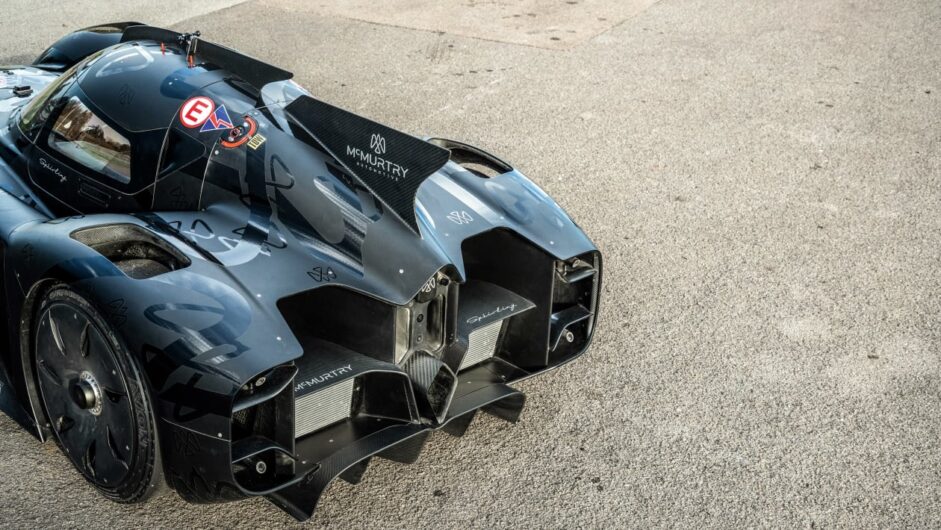
Today, Renishaw is a multi-billion-pound company, and six years ago McMurtry approached Yates, now 33, to head up a team to develop his concept for a new high-performance EV. At the time Yates was working on hybrid powertrains for Mercedes-AMG at its Brixworth F1 site, but he’d also worked on project management at AMG in Affalterbach in Germany. This is his first full EV.
‘It felt like the perfect opportunity to assemble the Dream Team, people I’d admired but not had a chance to work with. The first day we opened the doors in 2016 there were just five of us, six if you include Sir David. The core concepts were very much his vision and throughout the process he has been regularly involved. And the thing that we find amazing is his ability to pull us up on design decisions that we’ve made. He’s a phenomenally sharp engineer.’
The ultimate aim is to make a road car with track capability. ‘That’s the only sound justification for putting strong performance in a road car,’ says Yates. ‘And it’s actually very difficult at the moment to create an electric road car that is genuinely track capable.’ That’s a function of having a heavy car with a battery pack and powertrain designed primarily for range. Cells optimised for a slow, steady draw of power for mostly cruising mileage aren’t able to cope with sustained high demand. They overheat and de-rate. The Spéirling tackles these issues.
‘What we’ve done is design a vehicle from first principles,’ says Yates. ‘As a company we are incredibly vertically integrated. There’s not a great deal on the car that we haven’t had a hand in developing and designing. We very strongly believe that to make a car enjoyable to drive the key attributes are, firstly, it’s got to be small, and secondly, it’s got to be light.
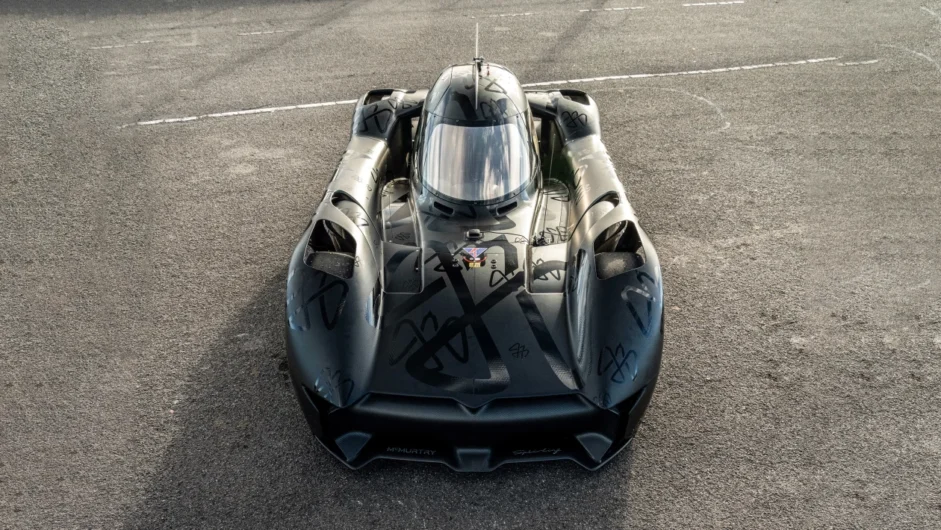
‘The thing that is relatively profound, I think, is that with the EV age the penalty that you pay for redundant space and redundant seats has gone up vastly. It used to be that carrying around lots of extra energy was relatively easy because you’d just have a slightly bigger fuel tank and not really notice. With electrification, the weight difference between a car that’s driver focused and a car that’s carrying redundant space is going to grow drastically. In a lot of ways the move to electrification might be the eureka moment for people like us who care about driver’s cars if it encourages manufacturers to make more focused vehicles.
So the Spéirling is only as big as it needs to be, has motors on just the rear axle and the battery pack is U-shaped and runs forward, surrounding the cockpit. It’s built around a carbonfibre, single-seat monocoque that can accommodate drivers of up to 6ft 7in, the bodywork is also carbonfibre and the suspension is multilink with active ride height control. For such a small car it has massive wheels and tyres: 9.5 x 19in at the front and 10.5 x 19in at the rear, shod with Avon slicks.
It weighs ‘well under 1000kg’ and predicted performance is 0-300kph in 9.0sec and over 322kph all out. Of more interest, the 800V-plus, 60kWh battery pack will give 30-60 minutes of track time and can be charged up again very quickly. ‘With the right grid infrastructure we can comfortably do a majority charge, say 75 per cent plus, in 15 minutes, and that’s being a bit conservative. In part that’s possible because we have a power-focused powertrain and cells; absolutely everything is designed to give out and take in charge at a high rate.’
The McMurtry Automotive team now numbers around 30. The car here is the second running prototype, an evolution of the first, and was completed just a couple of days before it made its public debut at 2021’s Goodwood Festival of Speed.
‘It’s testament to the capability of the team that we genuinely put the wheels on, went straight to Llandow Circuit in south Wales and spent a bit of time with Alex Summers [2015 British Hill Climb Champion] and Derek Bell [the legendary sportscar racer]. We managed two days of running and then went to Goodwood and went up the hill in front of hundreds of thousands of people. We were absolutely thrilled that it went well.’
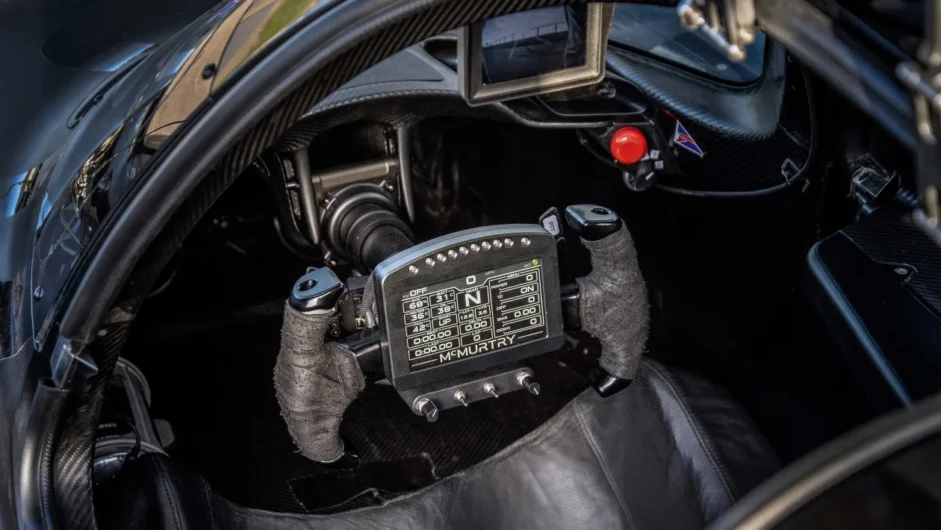
Nobody gets out of the car unmoved by driving it, says Yates with a big smile, adding that with straight-cut gears it’s a more engaging and thrilling experience than you might expect from hearing it pass. When the Spéirling is really going for it, its acceleration is surreal and the noise is like the high-pitched sound of a commercial jet’s engines modulating on the final approach.
The Spéirling’s fan-powered downforce is an interesting consequence of it being such a small car. It’s harder to have a shape or add spoilers large enough to generate the aerodynamic downforce appropriate to its performance, says Yates. ‘If you wanted just a few kilograms of downforce then you could do that with a lip or a wing, but our downforce targets are aggressive. To deliver the level we want and keep the car in this compact form, a fan system is not just the most efficient way, it’s probably the only way. We have a DRS function for the straights so we can drop the power consumption massively when we don’t need the downforce.
What the team started with three years ago was something akin to 1970s fan cars like the Brabham BT46 and Chaparral J2, but what they have now is something quite different. Instead of trying to create a skirted area from sill to sill the Spéirling has a skirted area about the size of a bodyboard beneath the driver.
‘If you can do a sealed system that’s a relatively small area and pull a reasonable pressure delta over it, you can deliver downforce for relatively low power useage,’ says Yates. ‘It’s an efficient way of doing things. It’s based on a centrifugal fan rather than an axial fan and that gives us a nice large pressure delta and it’s properly compact because we’re not actually shifting a huge amount of air.’
The system has two fans mounted beneath the sloping pod behind the driver’s head, and one or both can be running dependent on the amount of downforce required. Another advantage of having a small skirted area in the middle of the car is that the tyres can ride even serrated kerbs without breaking the seal and losing downforce.
Initially, McMurtry used prototype systems mounted in trailers to help development, but a lot of the proof-of-concept work was carried out using an old ambulance converted to electric. Yep, an old ambulance, lapping another local circuit, Thruxton, the country’s fastest racetrack.
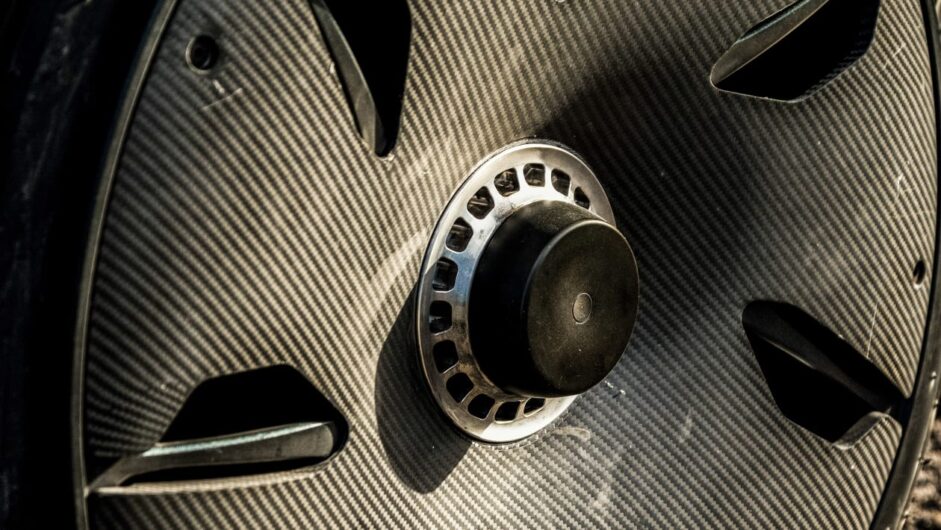
‘It gave the right loads, there was plenty of space to work and it provided valuable insights,’ explains Yates. ‘You can switch on the downforce and experience how it works, how it responds to a moving surface and when the suspension is moving around, when you’re cornering. It’s still undoubtedly the ambulance with the most downforce in the world…’
Other challenges of the system still to be resolved include creating an effective filter system so that following cars aren’t peppered with debris that’s sucked up and ejected, but there’s then the issue of what to do with debris that is filtered out. You don’t want to be carrying it around and emptying bags when you pop the car on charge like it’s an expensive vacuum cleaner. There’s also the effect of this (variable) internal airflow system on the car’s overall aerodynamics to be taken into account.
‘Today you’ll hear a flat fan speed because we’re just trying to measure things and reduce the number of variables. It’s relatively easy for us to map it to increase downforce with car speed. We’re exploring whether we can make it work well at all speeds.
Yates describes where they are, six years in, as the proof-of-concept stage. The current plan is to make a small number of track cars and then look at a road version. The Spéirling already complies with many competition car safety regulations, which is why it’s allowed to run at MSV tracks in general testing. A road car is much harder because of all the legislation involved and the addition of lights and other essentials. And a road car – surely – has to be a two-seater, and that means redrawing all the hard-won compromises. Fan-assisted downforce might not be appropriate, desirable or even necessary for the road car, either.
But even without it there’s a strong, appealing sense of innovation and obsessive attention to size and weight about the McMurtry project that brings to mind people like Gordon Murray and Colin Chapman. ‘Murray and Chapman are absolutely legendary in the history of engineering,’ says Yates, adding that the Spéirling is ‘similar to Murray’s Rocket in certain regards: smaller is better, super lightweight. And we clearly had a similar thought process at some point that it might be time for the return of fans.’
We may not have driven the Spéirling yet, but seeing the prototype in action, and discovering what drives the team behind it, you quickly get a warmer feeling about an entirely EV future.
This article originally appeared at evo.co.uk
Copyright © evo UK, Autovia Publishing

